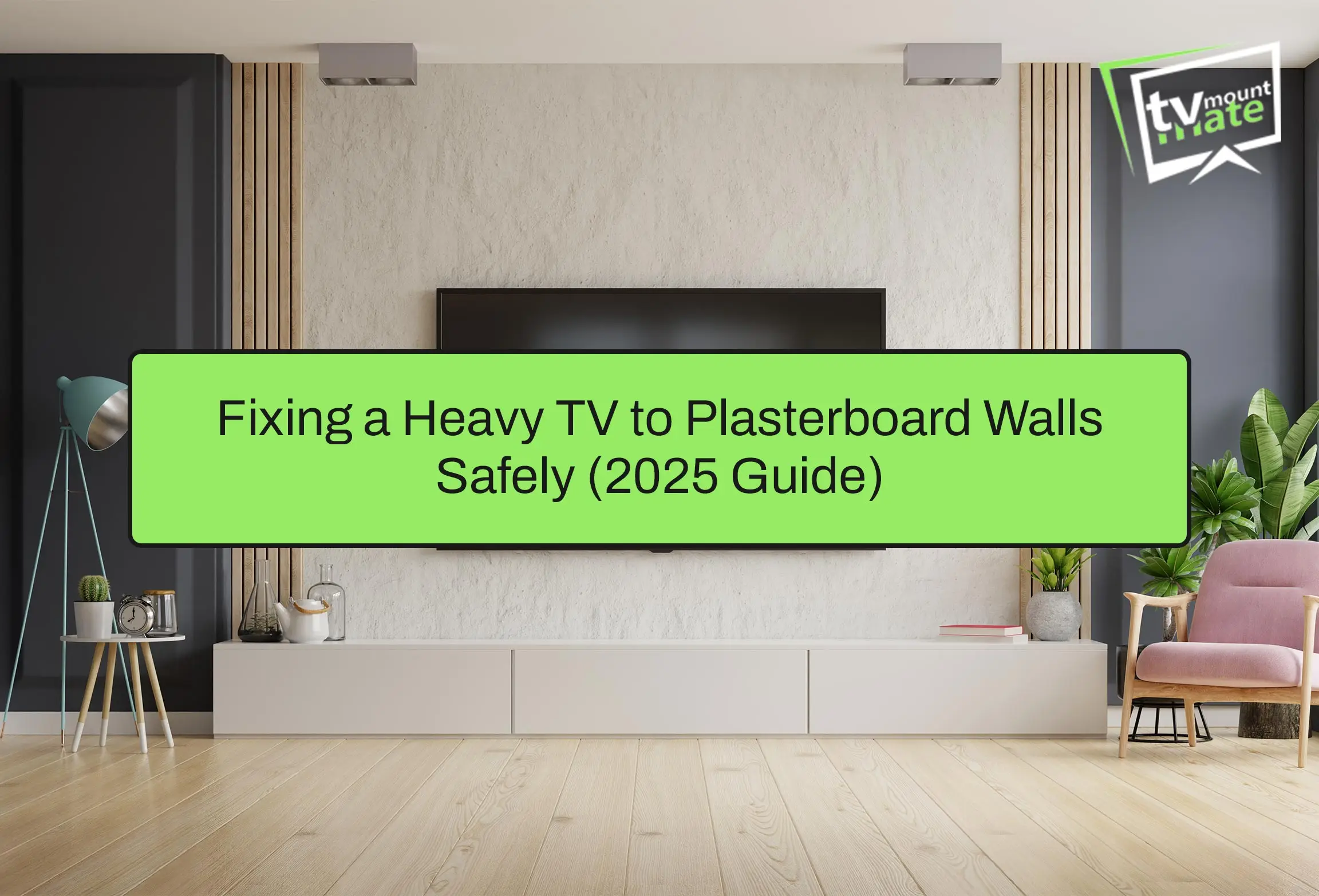Fixing a Heavy TV to Plasterboard Walls Safely
Mounting a standard 32-inch TV on plasterboard walls is one thing—but what about a heavy 65-inch, 75-inch, or even 100-inch flat screen weighing over 30kg? For many homeowners in London and across the UK, this is a real challenge. The thought of a massive TV tearing out of weak plasterboard is enough to put anyone off DIY.
The truth is, fixing heavy TVs to plasterboard walls is possible—but only if you use the right brackets, the correct fixings, and a cautious installation approach. This guide explains exactly how to do it safely.
Understanding the Risks of Heavy TVs on Plasterboard Walls?
Heavy TVs put extreme stress on plasterboard. Common risks include:
- Wall Cracks: Plasterboard crumbles if overloaded.
- Bracket Failure: Standard wall plugs can’t handle the weight.
- TV Collapse: Incorrect installation can cause expensive damage—or even injury.
That’s why it’s essential to use professional-grade fixings and avoid shortcuts.
Step-by-Step Guide to Fixing a Heavy TV on Plasterboard Walls.
1. Choose the Right Bracket
For heavy TVs, stick with fixed or tilting brackets only.
- Fixed Brackets: Best for maximum stability.
- Tilting Brackets: Allow small angle adjustments while keeping the load evenly distributed.
Avoid full-motion brackets—they create torque (pulling force) that plasterboard walls cannot withstand.
2. Find the Studs Behind the Plasterboard
- Use a stud finder to locate wooden or metal studs.
- Mounting into studs is the safest method for TVs over 30kg.
- Always anchor into at least two studs when fixing heavy brackets.
3. Use Heavy-Duty Plasterboard Fixings
If studs aren’t available:
- Use GripIt Blue fixings (rated up to 113kg on plasterboard).
- Consider toggle bolts or cavity anchors for additional strength.
- Spread the load across multiple fixing points—minimum of 6–8 fixings for large TVs.
4. Spread the Load with Mounting Rails
For very large TVs (75–100 inches):
- Use a rail-style bracket that fixes across several points in the wall.
- This prevents all the weight from concentrating on just a few anchors.
5. Double-Check Weight Ratings
- Always check both the bracket rating and the fixing rating.
- Your fixings must exceed the TV’s weight by at least 25% safety margin.
6. Mount and Test Carefully
- Secure the bracket fully before attaching the TV.
- Test stability by gently applying downward pressure.
- If there’s any movement, reinforce before hanging the TV.
Check our article on – TV Bracket Types – Expert Guide for the Perfect Mount
Special Considerations for London Homes .
- Dot-and-Dab Walls: Many London homes use plasterboard fixed to masonry with adhesive. In this case, you may be able to fix directly into solid wall behind.
- Metal Studs: New-builds often use metal studs instead of wood. These require self-drilling cavity anchors.
- Rental Properties: Always confirm with landlords before drilling into plasterboard walls.
Signs You Should Consider a Professional Installer.
While DIY is possible, certain situations call for professional help:
- TV is over 40kg.
- Wall construction is uncertain or weak.
- Bracket requires multiple anchor types.
- The TV is mounted above a fireplace.
Professional tv wall hanging services in London carry specialist fixings and tools, ensuring your TV is mounted securely and safely.
Check our article on – TV Mounting Height Guide London – Best TV Viewing Angle Tips
FAQs on Fixing Heavy TVs to Plasterboard Walls.
Conclusion.
Fixing a heavy TV to plasterboard walls safely requires planning, strong brackets, and the right fixings. For TVs in the 65–100 inch range, it’s crucial to:
- Use studs whenever possible.
- Choose fixed or tilting brackets only.
- Rely on GripIt anchors or multiple heavy-duty fixings.
- Spread the load with rails for very large TVs.
If you’re not 100% confident in your walls or installation, consider a tv hanging service to avoid the risk of collapse. Done properly, your TV will sit securely for years of safe, stylish viewing.




Leave a comment